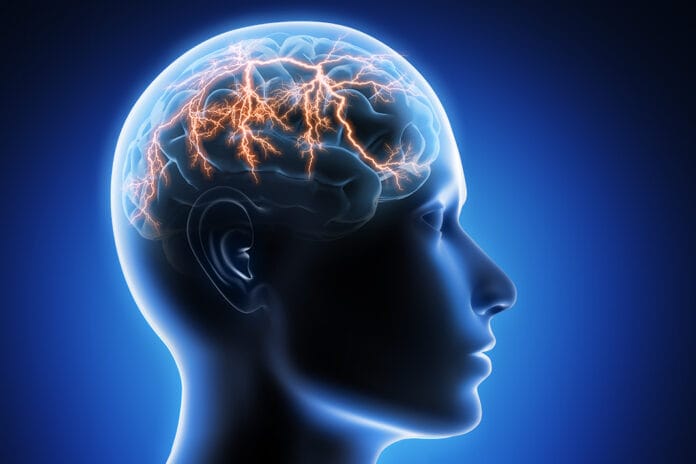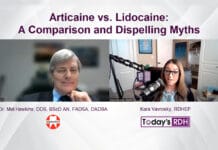Our brain consists of millions of neurons that are linked by synapses in an elaborate network system, and this process of activity is called neurotransmission. The brain, as is sometimes speculated, houses more connections than there are stars in the Milky Way, and textbooks for years have estimated that there are “100 billion neurons” in the brain.
Neuroscientist Suzana Herculano-Houzel, an associate professor of psychological science at Vanderbilt University, figured out that that estimate was hearsay. By dissolving a whole brain into a solution and counting the nuclei of neurons (brain soup), she figured out that we are at about 86 billion neurons.1 Another myth is that we only use 10% of our brain. Brain imaging shows that almost all regions of the brain are active during most daily tasks such as talking, walking, and even listening to music.
Neuroscientists are constantly discovering intricacies of the brain. A recent discovery is a new kind of neuron ─ rosehip ─ but are unsure what it does and are not found in mice or rats.2
Scientists measure the electricity in the brain, which is essentially how our brain functions.3 Rumor has it our brains can light a low watt light bulb, but there can be malfunctions in the circuitry, and sometimes a seizure will occur.
This article concludes with information about the management of dental patients who experience a seizure. But the following background information about the health condition can help dental hygienists be aware of what epileptic patients experience.
Seizures
Seizures are defined as a sudden, uncontrolled electrical disturbance of the brain. This may produce a physical convulsion, minor physical signs, thought disturbances, or a combination of symptoms. In 2015, 1.2% of the U.S. population had active epilepsy (3.4 million people).4 It affects men more than women, and there are many causes; brain malformations, medication reactions, and lack of oxygen to the brain are reasons.5 According to the Epilepsy Foundation, in people over the age of 65, stroke is the most common cause of new-onset seizures.6
In a chart on its website, the Epilepsy Foundation breaks down the common causes of seizures by age:
In newborns:
- Brain malformations
- Lack of oxygen during birth
- Low levels of blood sugar, blood calcium, blood magnesium, or other electrolyte problems
- Inborn errors of metabolism
- Intracranial hemorrhage
- Maternal drug use
In infants and children:
- Fever (febrile seizures)
- Brain tumor (rarely)
- Infections
In children and adults:
- Congenital conditions (Down’s syndrome; Angelman’s syndrome; tuberous sclerosis and neurofibromatosis)
- Genetic factors
- Progressive brain disease (rare)
- Head trauma
In seniors:
- Stroke
- Alzheimer’s disease
- Trauma
When seizures become consistent, it is then called epilepsy, a chronic neurologic disorder. Seizures are the primary symptom of epilepsy, but they can be caused by a number of other events ─ infections such as meningitis, alcohol or drug withdrawal, low blood sugar, a stroke, a brain tumor, and head injuries.7
Seizures are divided into two groups: generalized and focal.
Generalized:
- Absence seizure also called petit mal. You may lose focus or stare into space for a few seconds.
- Tonic-clonic seizures also called grand mal. You may cry out, fall to the ground, or have strong muscle jerking.
Focal:
- Simple focal affects a small part of the brain and can have minimal symptoms, as little as a strange taste or a small twitch.
- Complex focal involves multiple areas of the brain that can cause confusion.
- Secondary generalized start as a focal in one part of the brain but then progresses to a generalized seizure.
Influence of Seizures in Dental Care
For the several kinds of epilepsy, more than 20 different medications help with treatment, and a host of dietary and surgical techniques help patients get good control. In dentistry, we have to have a clear understanding of what the disease is and how best to care for this demographic.
Research is limited on the influence of seizures in dental care. The focus has mainly been on gingival hyperplasia induced by antiepileptic medications. There is a need for more research related to dentistry and how to treat and manage seizures. Patients with seizure disorders have a propensity toward poor oral hygiene leading to decayed or missing teeth. They may have trauma-induced loss of teeth, abrasion, and poor periodontal conditions. Unfortunately, dentists are likely to consider quick and simple procedures to help with their conditions without considering all the options.
Surgical care ─ When doing surgical procedures on medicated epileptic patients, there are some things to keep in mind. These patients may be at an increased risk of fracture. Enzyme-inducing antiepileptic drugs change the metabolism and clearance of vitamin D and have been associated with osteopenia and osteomalacia.8 For patients taking phenobarbital, phenytoin, or primidone, adequate calcium and vitamin D supplementation (a minimum of 1,000 mg and 400 IU daily, respectively) can reduce the risk of fractures.9
Wound healing can be another issue of concern. Valproic acid, an anticonvulsant, may cause bone marrow suppression, which can impair wound healing and increase post-operative bleeding and infections. Being aware and a consultation with the patient’s physician will go a long way to ensure better treatment outcomes. Decreased platelet count is the most common and best recognized hematologic effect of valproic acid (the incidence varies from 5% to 40%).10
Periodontal concerns ─ Within 12 to 24 months of initiation of phenytoin (another anticonvulsant), about half of patients will develop gingival hyperplasia. Phenytoin alters the metabolism of gingival fibroblasts resulting in the production of excessive amounts of collagen.
Historically, research has been done about chlorhexidine gluconate helping with hyperplasia. But, thankfully, dentistry has many other options for reducing biofilm and cleaning up pathogens.5,11 Excellent home care is best for the prevention of hyperplasia and decreasing the severity of the condition.
It can be very frustrating for the patient, though. Other oral manifestations of antiepileptic drugs may be xerostomia, stomatitis, aphthous ulcers, delayed healing, and even a rash.
Prosthetics ─ More missing teeth are associated with epileptic patients due to decay, periodontal disease, or injury. We know that replacing teeth gives patients a better quality of life, but prosthetics may be more complicated.
Epileptic patients who suffer from tonic-clonic seizures (grand mal) with involuntary muscle contractions that include the masticatory system require special treatment. It is the usual recommendation to have fixed prosthesis instead of removable.12 Dentures and partials can break or create choking hazards during any seizure, and it should be considered when at all possible to create fixed prosthetic solution.
Drug interactions ─ It is extremely important that clinicians understand the jeopardy that other medications can put the epileptic patient under. For instance, antifungal agents (such as fluconazole) and antibiotics (such as erythromycin, ciprofloxacin, clarithromycin, and metronidazole) may interfere with the metabolism of certain antiepileptic drugs.
Fluconazole and phenytoin are associated with a clinically significant increase in phenytoin plasma concentration and may require adjustment to maintain safe therapeutic concentrations. However, other anticonvulsants such as vigabatrin, lamotrigine, levetiracetam, oxcarbazepine, and gabapentin are unlikely to interact with fluconazole.
Seizures During Dental Care
The factors that provoke seizures include incorrect use of medications, sleep deprivation, drug abuse, excessive use of alcohol, excessive use of caffeine, hormonal changes, low blood sugar, electrolyte imbalance, congenital disease, and medications that reduce the efficacy of antiepileptic medications. The Journal of the Canadian Dental Association suggests the following steps during a dental appointment:
Actions to Take If A Patient Has A Seizure
- Clear all instruments away from the patient.
- Place the dental chair in a supported, supine position as near to the floor as possible.
- Place the patient on his or her side (to decrease the chance of aspiration of secretions or dental materials in the patient’s mouth).
- Do not restrain the patient.
- Do not put your fingers in his or her mouth (you might be bitten).
- Time the seizure (the duration of the event may seem longer than it is).
- Call 911 if the seizure lasts longer than 3 minutes.
- Call 911 if the patient becomes cyanotic from the onset.
- If possible, administer oxygen at a rate of 6–8 L/minute.
- Be aware of the possibility of compromised airway or uncontrollable seizure.
- If the seizure lasts more than 3 minutes and recurs, drug administration is required.
* There are conflicting data as to the administration of drugs. Some data recommends if the seizure lasts longer than 1 minute.
Once the Seizure Is Over
- Do not undertake further dental treatment that day.
- Try to talk to the patient to evaluate the level of consciousness during the postictal phase.
- Do not attempt to restrain the patient, as he or she might be confused.
- Do not allow the patient to leave the office if his or her level of awareness is not fully restored.
- Contact the patient’s family if he or she is alone.
- Do a brief oral examination for sustained injuries.
- Depending on the postictal state, discharge the patient home with a responsible person, to his or her family physician, or an emergency room for further assessment.
The Surgical Science journal offers the following advice for epileptic patients:
Fundamental Principles to Prevent Seizures in the Dental Practice
- Knowledge of the patient’s previous seizure episodes and medications.
- Knowledge of the conditions that provoke epileptic seizures in order to avoid them.
- Having appointments in the morning, kept short, and reducing noise and bright lights can be helpful for reducing the incidence of a seizure.
- The ability to recognize the early signs of a seizure, take precautions before it occurs, and provide the patient with supportive care. (Note: epileptic patients many times have an aura before a seizure. An aura is a feeling, experience, or movement that can be recognized by the patient.)
Patients with epilepsy can be safely treated in a dental practice. Clinicians who understand epilepsy can be an invaluable asset and service for these patients, and the ability to provide proper oral care and promote systemic health will set your office apart.
Dental hygienists specifically play an important role in the management and care of epileptic patients. Whether they are diligently reviewing health histories, keeping a watchful eye on the prevention of a seizure, or encouraging these patients to continue proper home care or treatment, we are on the frontline of yet another way to be an asset to our practice and patients.
Need CE? Check Out the Self-Study CE Courses from Today’s RDH!
Listen to the Today’s RDH Dental Hygiene Podcast Below:
References
- Herculano-Houzel, S. The Human Brain in Numbers: A Linearly Scaled-up Primate Brain. Front Hum Neurosci. 2009; 3: 31. doi:10.3389/neuro.09.031.2009.
- Boldog, E., Bakken, T.E., Hodge, R.D. et al. Transcriptomic and Morphophysiological Evidence for a Specialized Human Cortical GABAergic Cell Type. Nat Neurosci. 2018; 21:1185–1195.
- Lieff, (2012, December 3). J. Brain Electricity and the Mind. Jon Lieff, MD. Retrieved from https://jonlieffmd.com/blog/brain-electricity-and-the-mind
- Epilepsy Data and Statistics. (2020, September 30). Centers for Disease Control and Prevention. Retrieved from https://www.cdc.gov/epilepsy/data/index.html
- Senem, M.Ö., Sülün, T., Hümeyra, K. Management of Epileptic Patients in Dentistry. Surgical Science. 2012; 3(1): 47-52. doi: 10.4236/ss.2012.31008.
- Schachter, S.C., Shafer, P.O., Sirven, J.I. (2014, March 19). What Causes Epilepsy and Seizures? Epilepsy Foundation. Retrieved from https://www.epilepsy.com/learn/about-epilepsy-basics/what-causes-epilepsy-and-seizures
- The Epilepsies and Seizures: Hope through Research. (2020, June 26). National Institute of Neurological Disorders and Stroke. Retrieved from https://www.ninds.nih.gov/Disorders/Patient-Caregiver-Education/Hope-Through-Research/Epilepsies-and-Seizures-Hope-Through#3109_2
- Mattson, R.H., Gidal, B.E. Fractures, Epilepsy, and Antiepileptic Drugs. Epilepsy & Behavior. 2004; 5(2): 236-40. ISSN 1525-5050.
- Sato, Y., Kondo, I., Ishida, S., et al. Decreased Bone Mass and Increased Bone Turnover with Valproate Therapy in Adults with Epilepsy. Neurology. 2001; 57(3): 445–9.
- Aragon, C.E., Burneo, J.G. Understanding the Patient with Epilepsy and Seizures in the Dental Practice. J Can Dent Assoc. 2007 Feb; 73(1): 71-6. PMID: 17295949.
- Russell, B.G., Bay, L.M. Systemic Effects of Oral Use of Chlorhexidine Gel in Multihandicapped Epileptic Children. European Journal of Oral Sciences. 1981; 89(3).
- Karolyhazy, K., Kivovics, P., Fejerdy, P., Aranyi, Z. Prosthodontic Status and Recommended Care of Patients with Epilepsy. J Prosthet Dent. 2005 Feb; 93(2): 177-82. doi: 10.1016/j.prosdent.2004.11.008. PMID: 15674230.












